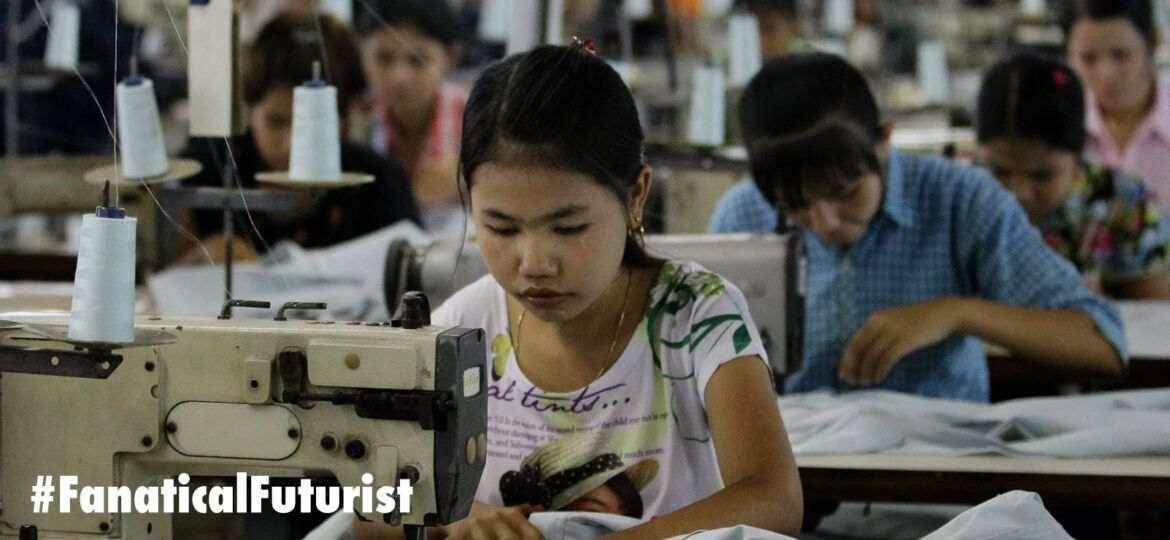
WHY THIS MATTERS IN BRIEF
Making a robot that can sew, and complete an entire garment, is hard, but inventors are now cracking the code and one day they’ll help put illegal sweatshops out of business.
The first robot that can sew together a complete item of clothing could put an end to sweatshop labour in the manufacture of low-cost garments, an industry that, according to analyst firm DoSomething in 2016 was estimated to employ over 168 million children aged 5 to 14 in what many would call “unethical” and “questionable” conditions. And that’s being polite.
Sewbo, who was created by Seattle based web developer Jonathan Zornow, can use a sewing machine and chemically stiffened pieces of material to create basic clothes, such as T-Shirts, and while making a robot that sews and assembles a complete item of clothing doesn’t sound too hard it’s apparently very hard.
While some clothing manufacturers use specialist machines to sew small sections of garments, as well as weave fabrics and cut material into the right shape, up until now no single machine has been able to assemble an item of clothing in its entirety without human help.
Designed to “create higher quality clothing at lower costs”, the Sewbo robot overcomes the traditional difficulties robots have had handling limp fabrics by temporarily stiffening them with a liquid version of a thermoplastic chemical used in 3D printing.
Sewbo is made up of a Universal Robot arm that costs about $35,000 (£27,000), a traditional sewing machine, and the reusable thermoplastic solution.
The two panels of material to be sewn together are given this hard texture and attached to one another using an ultrasonic welder so that Sewbo can pick them up as one item and feed it into an industrial sewing machine.
This means that Sewbo isn’t that different from other industrial robots that work with materials such as sheet metal.
The chemical that gives the clothing this hard texture is water soluble, so once the T-Shirt has been put together all the robot needs to do is drop it into some hot water and it loosens up.
“It will shorten supply chains and lessen the long lead times that hamper the fashion and apparel industries, helping to reduce the complexity of today’s intricate global supply network,” said Zornow.
As the robotic arm can be programmed to repeat one action, Zornow expects manufacturers would use an assembly line of the machines, each of which would complete a small task before passing the item to the next robot. Sewbo manufacturing lines could be based within the countries where the clothes are going to be sold, reducing the environmental and social costs of large supply chains.
Zornow is now hoping to partner with people in the fashion industry who are interested in automating clothes production, so, as the rate of automation continues to gather speed it’s now increasingly looking inevitable that not only will the sweatshops be automated, but also the people working in the legitimate factories too… A double edged sword perhaps? The switch will only come though when these robots are cheaper to operate, and I don’t think that will be as long as many people anticipate.
That said though, as we continue to see the ascent of 3D Printing and new “Digital” supply chains from companies like Adidas that eliminate remote factories completely the switch from human to robot might be a short lived one as the factories are decentralised and moved into retailers stores. But that’s another story.

















I abhor sweatshops but the income these children make for their poor families should be offset. You can’t just get rid of sweatshops without figuring out a way to replace that money.